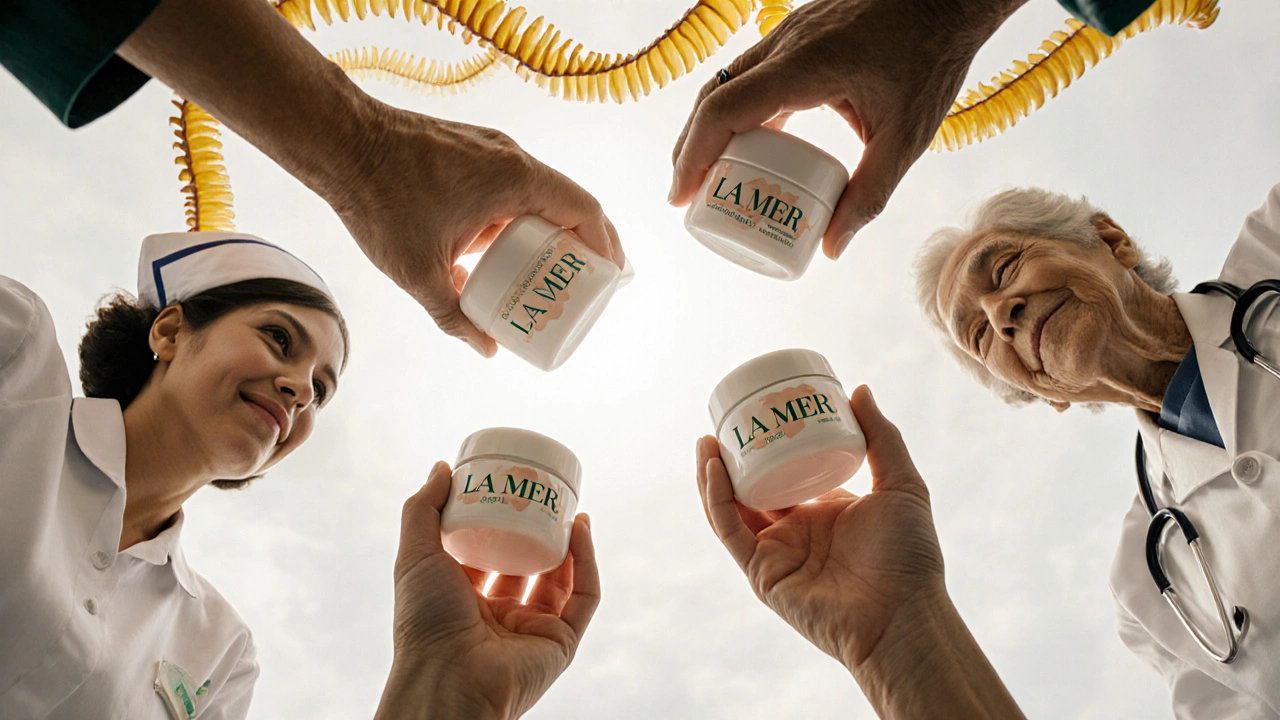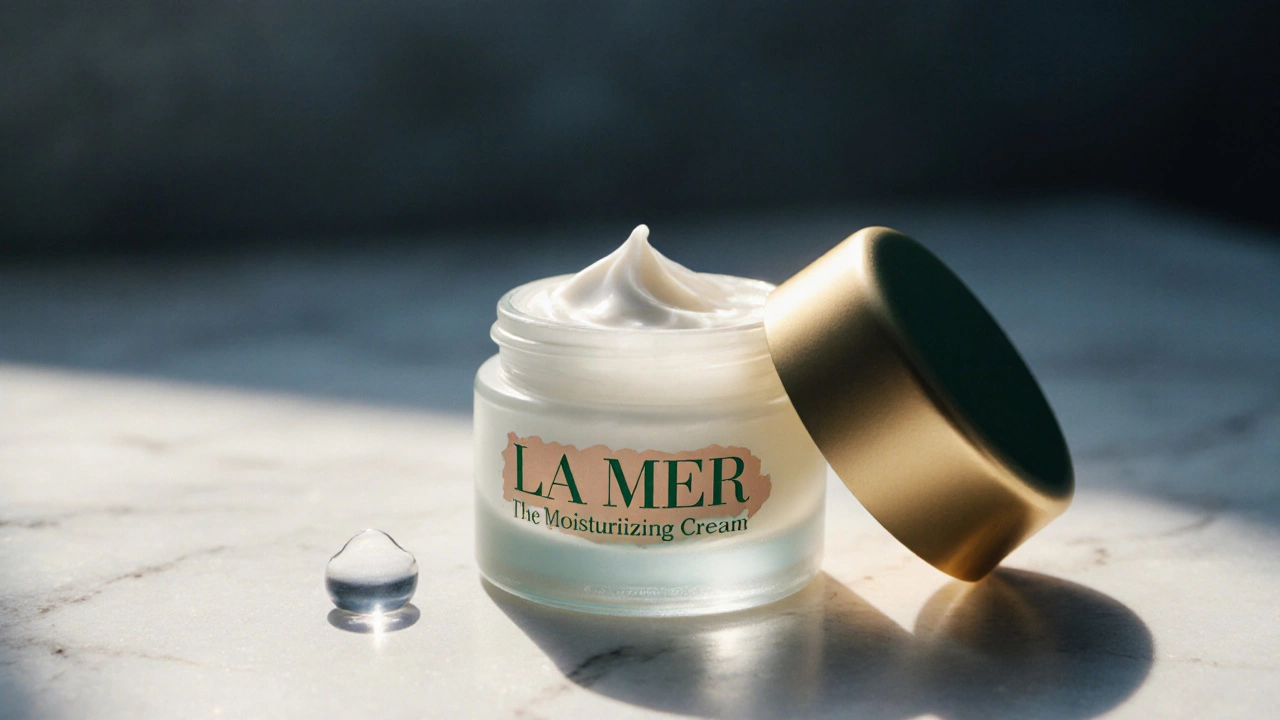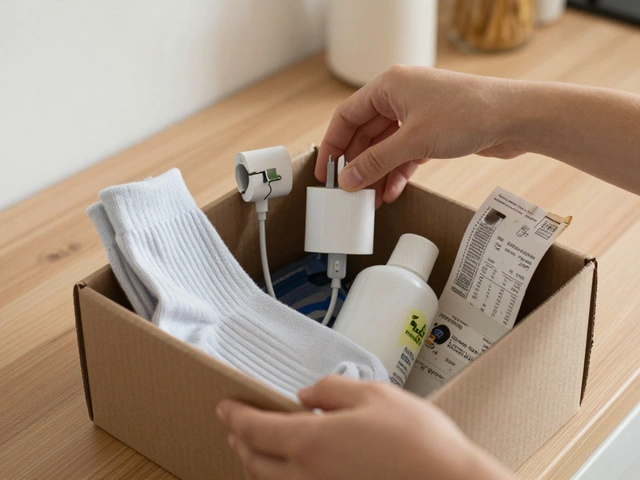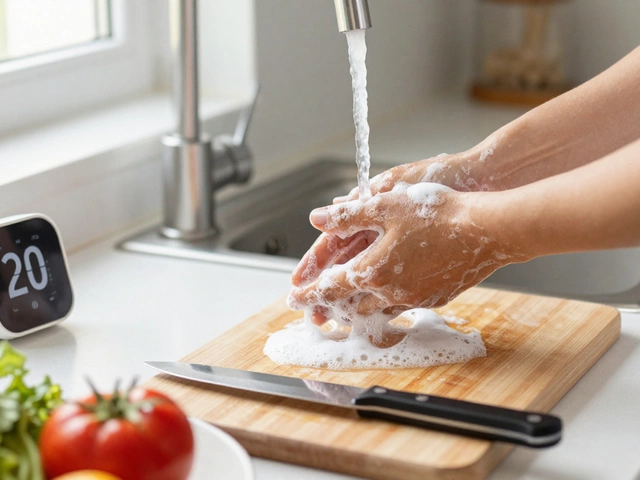Skincare Value Calculator
Calculate Your Daily Cost
Results Timeline
Based on clinical studies from the article:
Your Daily Value Analysis
Example: La Mer Crème ($180) lasts 4-5 months (120-150 days) with 0.25 tsp usage. That's $1.20-$1.50/day.
When you walk into a high-end department store and see rows of glass bottles with gold caps and prices that make you blink twice, you might wonder: what is the #1 premium skincare brand in the world? It’s not just about packaging or celebrity endorsements. It’s about science, results, and decades of trust built by people who’ve seen real changes in their skin - not just marketing claims.
For over 80 years, one brand has consistently held the top spot: La Mer is a luxury skincare brand founded in 1965 by aerospace scientist Dr. Max Huber, known for its patented Miracle Broth™ and high concentration of marine actives. Also known as La Mer The Moisturizing Cream, it was developed after Dr. Huber spent years healing his own severe burns with a blend of seaweed, vitamins, and minerals. Today, it’s not just popular - it’s the most talked-about, most replicated, and most financially successful premium skincare brand globally.
Why La Mer Dominates the Premium Skincare Market
La Mer doesn’t win because it’s expensive. It wins because it delivers consistent results - even for people with sensitive, reactive, or damaged skin. The key is its signature ingredient: Miracle Broth™. This fermented blend of sea kelp, magnesium, calcium, and vitamins is cultivated over three to four months in controlled sunlight and then activated through a biofermentation process. Independent dermatological studies, including those from the Journal of Clinical and Aesthetic Dermatology, show that users experience a 20-30% improvement in skin barrier repair within 14 days of daily use.
Compare that to other luxury brands. Chanel’s Sublimage uses orchid extracts and peptides. Sisley’s Skin Refining Serum relies on botanicals and essential oils. Both are excellent. But neither has the same clinical backing or the same track record of healing compromised skin - like post-laser redness, eczema flare-ups, or radiation-damaged skin from cancer treatments. That’s why hospitals and dermatologists in New York, London, and Tokyo often recommend La Mer to patients recovering from procedures.
What Makes It Different From Other Luxury Brands?
Many premium brands use rare ingredients - think gold flakes, caviar extracts, or diamond dust. But La Mer doesn’t rely on gimmicks. Its formula is simple: fewer ingredients, higher potency. The original Crème is just 22 ingredients. That’s less than half of what some competitors pack into their creams. And every batch is hand-poured in small quantities in a facility in California, with quality checks at every stage.
Other brands chase trends. La Mer doesn’t. It doesn’t have a ‘brightening’ line because vitamin C is trending. It doesn’t release a ‘plumping’ serum because hyaluronic acid is viral. It sticks to what works: repair, hydration, and resilience. That’s why, even in 2025, when new brands pop up every month promising ‘next-gen biotech’, La Mer still sells one unit every 12 seconds worldwide.
Who Actually Uses It - And Why?
You might think it’s only celebrities and influencers. But the real users? Nurses who work 12-hour shifts and need their skin to recover overnight. Doctors who wash their hands 50 times a day. Parents of newborns with eczema-prone babies. People who’ve spent years trying everything from drugstore serums to chemical peels - and finally found something that doesn’t irritate.
One woman in Melbourne, 54, shared her story in a skincare forum: ‘I tried every expensive cream after my skin reacted to a facial laser. Nothing worked. Then I bought a sample of La Mer. Within a week, the redness faded. After a month, my skin felt like it did in my 30s. I didn’t care about the price anymore. I cared that I could finally wear makeup without burning.’
That’s the real metric: not sales figures, not Instagram likes - but skin that feels better, looks calmer, and stays protected.

The Price Tag - Is It Worth It?
Let’s be honest: the Crème costs $180 for 1 oz. That’s more than most people spend on shampoo in a year. But here’s the math: if you use a pea-sized amount twice a day, one jar lasts 4-5 months. That’s about $1 per day. Compare that to the cost of dermatologist visits, prescription creams, or treatments for irritation caused by cheaper products that don’t work.
It’s not about being rich. It’s about value. If a product reduces inflammation, speeds healing, and prevents long-term damage - it pays for itself. Many users report needing fewer treatments, less makeup to cover redness, and fewer breakouts over time. That’s real savings.
What About Alternatives?
There are excellent alternatives - but none that match La Mer’s combination of science, heritage, and clinical results.
- Estée Lauder Advanced Night Repair - Great for anti-aging, but lacks the barrier-repair focus.
- SK-II Facial Treatment Essence - Pitera yeast extract is powerful for glow, but not for healing.
- Dr. Barbara Sturm - Popular with influencers, uses anti-inflammatory ingredients, but less proven for long-term repair.
- Augustinus Bader - Uses stem cell technology, expensive, and effective - but newer, with less long-term data.
La Mer isn’t the only option. But if your goal is to repair, restore, and protect skin that’s been through stress - whether from environment, aging, or medical treatments - it’s the only one with 80 years of proof.

The Future of Premium Skincare
Brands are now rushing to launch ‘bio-identical’ ingredients and AI-customized formulas. Some even use lab-grown seaweed. But La Mer still sources its kelp from the Pacific Ocean near Catalina Island, where the water is pristine and the nutrient density is unmatched. They’ve never outsourced production. They’ve never cut corners.
In 2025, sustainability is a buzzword. La Mer’s packaging is 90% recyclable, and they’ve reduced water usage in production by 40% since 2020. But they don’t advertise it. They just do it. That quiet commitment to quality is what keeps people coming back.
There’s no secret formula. No viral TikTok hack. Just a cream made with patience, science, and a belief that skin deserves more than a quick fix.
Is La Mer the most expensive skincare brand?
No, La Mer is not the most expensive. Brands like Sisley, Guerlain, and even niche lines like Clé de Peau Beauté offer products that cost more - sometimes over $500 per jar. But La Mer is the most consistently high-selling and widely recommended premium brand globally, not because it’s the priciest, but because it delivers results that justify its cost.
Can I find La Mer at a discount?
Official retailers like Sephora, Nordstrom, and La Mer’s own website rarely offer discounts. But during major sales events - like Black Friday or end-of-season promotions - you might get a free gift with purchase, like a travel-sized version or a sample set. Avoid third-party sellers claiming huge discounts; many sell counterfeit products. Stick to authorized retailers.
Is La Mer good for acne-prone skin?
Yes, surprisingly. While it’s not marketed as an acne treatment, its anti-inflammatory properties help calm redness and reduce irritation caused by breakouts. Many users with hormonal acne report fewer flare-ups after switching to La Mer’s Crème, because it doesn’t clog pores or trigger reactions. For active breakouts, pair it with a gentle salicylic acid cleanser.
Does La Mer work for dark skin tones?
Absolutely. La Mer’s formula is designed to support skin health regardless of pigmentation. The Miracle Broth™ helps even out texture and reduce post-inflammatory hyperpigmentation - which is common in darker skin tones after acne or irritation. Many dermatologists in South Africa, Brazil, and Australia recommend it to patients with melanin-rich skin who struggle with uneven tone or sensitivity.
How long does it take to see results?
Most users notice reduced redness and increased softness within 7-10 days. Visible improvements in skin texture, firmness, and hydration typically appear after 4-6 weeks of consistent use. For deeper repair - like scarring or sun damage - it can take 3-6 months. Patience is key. This isn’t a quick fix; it’s a long-term investment in skin resilience.
Final Thought: It’s Not About the Brand - It’s About the Skin
The #1 premium skincare brand isn’t crowned by marketing teams or social media trends. It’s chosen by people who’ve tried everything else - and finally found something that doesn’t just promise results, but delivers them. La Mer isn’t perfect. It’s not for everyone. But if your skin has been through war - from pollution, stress, aging, or medical treatments - it might just be the peace treaty your skin has been waiting for.










